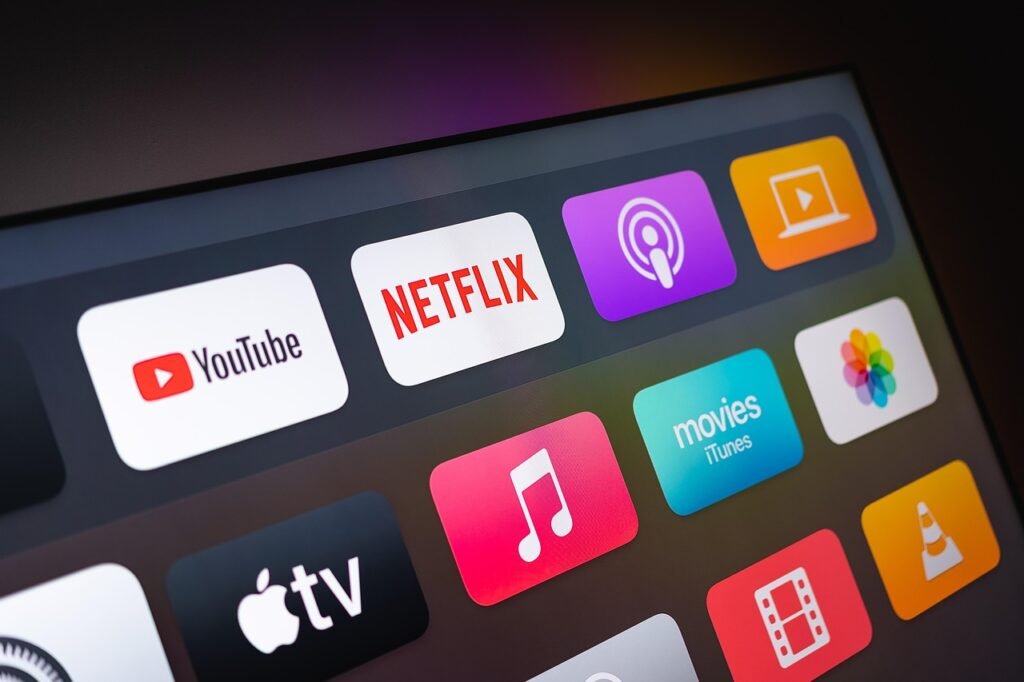You’ve probably heard a lot about royalty-free music in popular online content like YouTube videos, Twitch streams, and TikTok clips. Royalty-free music is widely used by creators, but what exactly does it mean, what are its limitations, and is there a better alternative? Royalty-free music libraries provide a vast selection of genres, making it simple to find the perfect track for any project.
What is the definition of royalty-free music?
The definition of royalty-free music refers to music that you can use in your content without having to pay royalties to artists or rights holders each time it’s played. Instead, you pay a one-time fee or subscribe to a royalty-free service for ongoing access.
One major advantage is the freedom to use it across a diverse range of platforms and content types without worrying about copyright issues. Royalty-free doesn’t mean creators don’t receive royalties; rather, it means you are not responsible for paying them. These payments are managed elsewhere. This model is widely used because it’s cost-effective and convenient for creators.
What is the difference between royalty-free and copyright-free?
Although the terms “royalty-free” and “copyright-free” are often used interchangeably, they have very different meanings in the music licensing world.
Royalty-free music refers to music that is still protected by copyright, but you pay a one-time licensing fee to use it without needing to pay ongoing royalties for each use or performance. The creator or copyright holder still owns the rights.
Copyright-free music means the music is not protected by copyright at all, either because the copyright has expired (as in the case of public domain works) or the creator has explicitly waived their rights. In this case, the music can be freely used, modified, and distributed without the need for permission or payment. However, true copyright-free music is rare; most music available online is either royalty-free or under Creative Commons.
In summary, royalty-free means you still need to purchase a license but don’t have to pay ongoing fees, while copyright-free means the music is truly free to use with no legal strings attached.
Is royalty-free music truly free?
No, royalty-free music isn’t free of charge. The term ‘free’ refers to not having to pay royalties each time you use a track in your content. If you don’t purchase royalty-free music and secure the proper rights, your content might be monetized by the rights holder, blocked, muted, or even removed.
It’s crucial to carefully read and understand the terms of each royalty-free music license to ensure you comply with all usage conditions and avoid any potential issues.

Is royalty-free music a genre?
No—royalty-free music isn’t a genre, it’s a licensing model. It allows you to use music without paying ongoing royalties, and it spans all genres and styles.
From YouTube videos and podcasts to Instagram Reels and films, it can be upbeat, chill, cinematic, ambient, corporate, or anything your project needs. Tracks may feature drums, piano, bass, or synths, making them suitable for everything from vlogs to ads to horror films.
Royalty-free music libraries are typically organized by genre and mood, so you can easily find background music or sound effects for any type of content.
Why use royalty-free music?
In the past, licensing music for big productions like TV shows or movies meant paying royalties to rights holders every time the show aired or was sold. This process is expensive and complicated, especially when dealing with multiple countries and distribution types.
Today, many creators prefer royalty-free music because it requires just one upfront payment or a subscription for ongoing use. Royalty free music makes it easy to add great soundtracks to projects like films, ads, social media, and YouTube videos, giving creators more freedom and flexibility.

However, royalty-free music providers often don’t own all rights to their tracks. Public performance rights, needed to play music publicly, are usually excluded. Without these, you risk fees, takedowns, lawsuits, and retroactive royalties.
Which types of royalty-free music to choose?
There are various types of licenses available. Depending on the provider, it may be offered under different names and licensing models. Some of these names include:
- Pre-licensed music
- Single-fee music
- Pre-paid music
- One-stop music
- All-in-one music
It can be a bit overwhelming, so let’s simplify things. Hai Music’s platform features a unique collection of royalty-free and copyright music, offering creators a diverse and distinctive catalog to explore and choose from.
HaiMusic offers an industry-leading royalty-free music platform with clear and comprehensive copyright protection. All tracks are safe for commercial use, public performance, and cross-platform distribution—giving creators complete peace of mind. With a diverse catalog spanning various genres and use cases, Hai Music is the perfect solution for ads, videos, livestreams, games, podcasts, and more.

What’s the difference between royalty-free and direct licensing?
As mentioned earlier, royalty-free music companies usually don’t own all the rights to every song in their collection. They might own some rights, but often they act as middlemen. They get permission from the actual rights holders and then let customers use the music.
This means you might still need to pay for some rights that aren’t included, like public performance rights. Many people don’t know this, which can cause problems when their videos go live on public sites.
Direct licensing is different. With direct licensing, you get permission from the company that owns all the rights to the music. This means you can use the music anywhere online without worrying about copyright or extra fees. Hai Music’s tracks come with public performance rights included. So, there’s no need to worry about any legal issues.

Where do you get royalty-free music?
You can find on many different websites and from various providers. But if you want something super best, Hai Music offers a huge library of studio-quality background music that can really improve your content. Their collection works great for any kind of project, whether it’s for business, creative work, or personal use.
Because Hai Music owns all the rights to the music in their library, including public performance rights, you don’t have to worry about copyright problems when you license music from them. Every track is checked by professional artists to make sure it’s high quality. Synchronization rights, mechanical rights, and public performance rights? All included. Extra fees or royalties? No need to worry. Hai Music has you covered.
If you want high-quality music under one subscription, with full monetization rights and none of the copyright hassle, check out our music library, and get access to new tracks every day.



